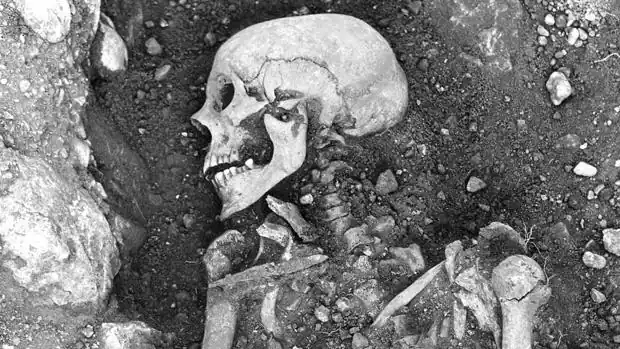 An international team of scientists has discovered extinct strains of smallpox in the teeth of Viking skeletons found at sites across Europe. The research, published in the journal "Science", demonstrates for the first time that the deadly disease affected humanity for at least 1,400 years.
An international team of scientists has discovered extinct strains of smallpox in the teeth of Viking skeletons found at sites across Europe. The research, published in the journal "Science", demonstrates for the first time that the deadly disease affected humanity for at least 1,400 years.
Smallpox spreads from person to person through infectious droplets, killing one-third of sufferers and leaving another third permanently scarred or blind. Around 300 million people died in the 20th century alone before it was officially eradicated in 1980 through a global vaccination effort, becoming the first human disease to be eliminated.
The researchers, led by Eske Willerslev, a professor at the University of Cambridge and director of the Lundbeck Foundation Center for Geogenetics at the University of Copenhagen, sequenced the genomes of smallpox strains extracted from teeth at eleven burial sites in the was Viking in Denmark, Norway, Russia and the United Kingdom. They also found the virus in multiple human remains from Öland, an island off the east coast of Sweden with a long history of trade. The team was able to reconstruct almost complete virus genomes for four of the samples. Thus they realized that its genetic structure is different from the modern smallpox virus eradicated in the 20th century. For that reason, they don't know how the disease manifested itself in the Viking Age; it may have been different from the virulent, modern strain that killed and disfigured hundreds of millions of people.
Spread across Europe
Massacred 10th century Vikings found in mass grave at St John's College, Oxford – Thames Valley Archaeological Services
“People traveling the world quickly spread Covid-19 and it is likely that the Vikings, who moved through Europe and beyond, spread smallpox. Right at that time, they were traveling by boat instead of by plane,” explains Willerslev. "The 1,400-year-old genetic information extracted from these skeletons is enormously important because it teaches us about the evolutionary history of the variola virus that caused smallpox," he adds.
Smallpox was eradicated from most of Europe and the United States by the early 20th century, but remained endemic in Africa, Asia, and South America. The World Health Organization launched an eradication program in 1967 that included contact tracing and mass communication campaigns, all public health techniques that countries have been using to control today's coronavirus pandemic. But it was the global rollout of a vaccine that finally allowed scientists to stop smallpox in its tracks.
Historians believe that smallpox may have existed as early as 10,000 BC. C., but until now there was no scientific evidence that the virus was present before the 17th century. It is not known how it first infected humans, but, like Covid-19, it is believed to have come from animals.
"The timeline of the emergence of smallpox has always been unclear, but by sequencing the earliest known strain of the killer virus, we have shown for the first time that smallpox existed during the Viking Age," says Martin Sikora, one of the lead authors who led the study, from the Center for Geogenetics at the University of Copenhagen.
In his opinion, "while we do not know for sure whether these strains of smallpox were fatal and caused the death of the Vikings, they certainly died with smallpox in their bloodstream. "It is also very likely that there were epidemics before our findings for which we have not yet discovered evidence."
Vikings in a mass grave at St John's College, Oxford
–
Thames Valley Archaeological Services
Emerging diseases
Researchers believe that understanding the genetic structure of this virus can help virologists understand the evolution of not only this but also other viruses and fight emerging viral diseases. As they explain, «knowledge of the past can protect us in the present. When an animal or plant goes extinct, it does not return. But mutations can reoccur or be reversed, and viruses can mutate or cause a zoonosis, an outbreak of infectious disease caused by a pathogen that jumps from a non-human animal to a human. What is supposed to have happened with the new coronavirus.
As Professor Willerslev concludes, 'smallpox was eradicated but another strain could spill out of the animal reservoir tomorrow. "What we know in 2020 about viruses and pathogens affecting humans today is just a small snapshot of what has plagued humans historically."
